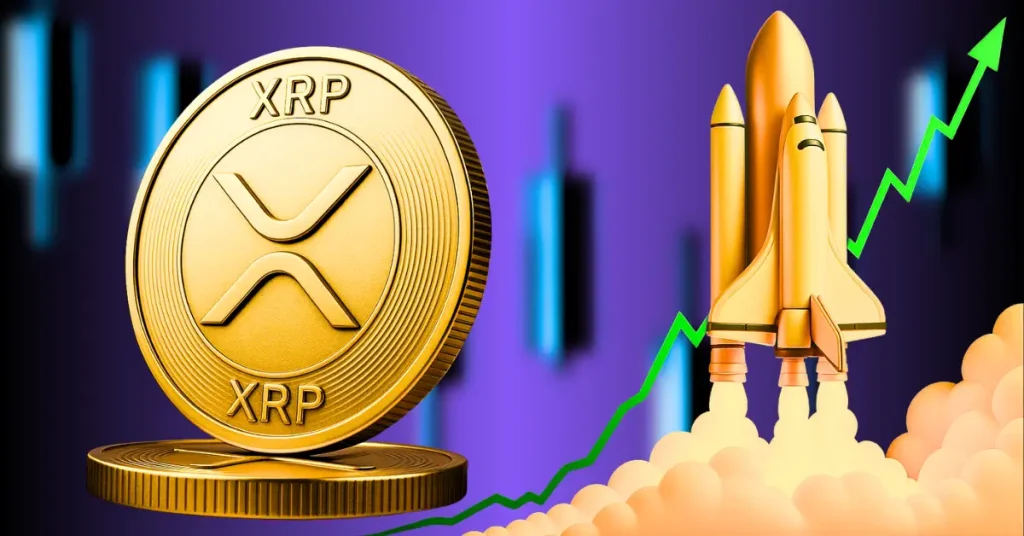ARTICLE AD BOX

- Ripple, the fourth-largest cryptocurrency, is holding steady above $2.15, despite recent market dips, just after Tether.
- Several analysts are optimistic that many institutions could choose XRP for cross-border payments.
Currently trading at $2.19, Ripple (XRP) has once again caught the attention of market watchers. A panel of industry specialists recently shared their long-term outlook, offering predictions that extend through 2035.
Some experts see the token potentially reaching as high as $8, signaling renewed belief in its role within cross-border payments and blockchain infrastructure for financial institutions.
Typically, skeptics highlight its history of underperformance and failure to reach its 2018 high of $3.84, while supporters are encouraged by optimistic forecasts. Interestingly, over the past decade, XRP has outperformed traditional benchmarks such as the S&P 500 and Nasdaq 100, a fact often overlooked by critics.
XRP Expert Forecasts
Jeremy Britton, CFO of BostonTrading.co, is firmly in the “buy” camp when it comes to XRP. “XRP seems to be the choice for many institutions. It is arguably no longer a cryptocurrency, and its ethos is almost gone, but its value is in the eye of the banker,” he said.
Ripple’s growing list of partnerships supports this sentiment. The company has teamed up with financial institutions around the world, including Santander, Bank of America, and Japan’s SBI Holdings. On top of that, while most corporations are stacking Bitcoin (BTC) for their treasuries, Ripple’s XRP is also making its way into institutional portfolios.
As Crypto News Flash reported earlier, XRP has entered a new chapter of adoption, with over $1 billion in treasury allocations coming from eight different companies.
Still, not everyone on the expert panel shares Britton’s optimism. Only 20% of them believe XRP is currently undervalued. The rest are split, 40% say it’s fairly priced, while another 40% think it’s already overvalued.
Sathvik Vishwanath, CEO of Unocoin, acknowledges that XRP has carved out a solid place among institutional players, but he also warns that its future may not be without challenges. “XRP’s price depends heavily on regulatory clarity and adoption for cross-border payments,” he said.
While the favorable outcome of Ripple’s long-standing legal battle has lifted investor sentiment, a recent attempt by Ripple and the SEC to jointly revise an earlier ruling was denied by Judge Analisa Torres. The motion aimed to reverse the classification of XRP’s primary sales and reduce a $125 million penalty tied to federal securities violations.
Vishwanath believes XRP still holds strong long-term potential thanks to its ability to cut transaction costs. As we’ve reported before, XRP is emerging as an alternative to SWIFT for cross-border payments. This is because of the Ripple ecosystem that includes RLYSD, XRPL, and RippleNet. All these enable transactions to be settled in just 3–5 seconds, at a fraction of the cost.
Joseph Raczynski, a futurist with JT Consulting and Media, is also holding off for now. He’s watching closely to see if the U.S. will introduce a no-tax policy for locally-based cryptocurrencies. “If that happens,” he says, “XRP will be the winner.” Earlier this year, Eric Trump floated the idea of a zero capital gains tax for U.S.-based crypto projects, specifically naming XRP and HBAR, an idea that sparked hope among holders.
On the flip side, Josh Fraser, co-founder of Origin Protocol, isn’t as bullish. While he agrees that XRP has earned its reputation, he believes it’s time to sell. According to Fraser, stablecoins now fulfill the same role, only more efficiently. “XRP is often seen as the cryptocurrency used by banks and institutions,” he said.
However, stablecoins are much more practical for this use case, and I do not see long-term value in holding XRP.
.png)
 4 months ago
4
4 months ago
4








 English (US)
English (US)